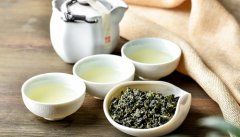Black tea history: which is the first kind of black tea in the world? Which kind of black tea was introduced into the western world?
In the early days of tea, the production of tea was very simple, picking, drying and / or roasting it. But in the Ming Dynasty, it was noticed that tea could actually wither and oxidize. This made the taste of the tea more intense, and the black tea was discovered. No one knows for sure who first discovered black tea. Like many discoveries, it often happens by accident. According to legend, farmers in Wuyi Mountain picked these leaves when a group of soldiers entered the village and had no time to deal with them. The next day, the tea withered. In order to save the harvest, people roasted leaves with pine. The villagers were surprised by the results, and the demand for this new type of tea began to grow exponentially. The type of black tea in early China, so where did black tea come from? Black tea was first found in Wuyi Mountain, Fujian Province. Today, black tea from this area is called "Zhengshan race" or "Zhengshan race". This kind of tea contains small leaves and buds. Its color tends to be black, but sometimes it can contain some golden buds. The premium version mostly contains golden buds, which are called Jin Junmei. Before the discovery of black tea, there was mainly a trade of Pu'er tea for horses along the ancient tea-horse road. Pu'er tea spread to Xizang and the surrounding areas. Later, it was the Japanese who were interested in Chinese green tea. However, after the emergence of black tea, tea really became popular all over the world.

In the 16th century, the Portuguese, led by the Dutch Jan Huygenn van Linscherten (Jan Huyghen van Linschoten), first introduced tea to the West from 1563 to 1611. It can improve attention and health. First of all, the royal family likes it, then the aristocracy, then the public. In the 17th century, the demand for tea boomed, and the Dutch East India Company led the trade. However, when the British East India Company successfully copied China and began to produce tea in India, they soon dominated the tea trade. When the tea bag was developed, as the tea became easier to make, this further stimulated the growth of demand. Global tea brands such as Lipton are beginning to emerge. These global brands slowly began to manage, grow and prepare their own teas in their place of origin, eroding the dominance of the British East India Company. Nowadays, with the increasing popularity of handmade tea, small producers are making a comeback.
Important Notice :
前街咖啡 FrontStreet Coffee has moved to new addredd:
FrontStreet Coffee Address: 315,Donghua East Road,GuangZhou
Tel:020 38364473
- Prev

Differences in taste between Zhengshan race and Xihu Longjing tea and matters needing attention for preservation of black tea and green tea
Traditionally, black tea has been the most popular tea drink outside China. After the discovery of black tea, it was the first time that the Portuguese introduced black tea to Europe. Members of the royal family loved it and soon the public discovered it. In 1908, after Thomas ThomasSullivan invented the tea bag,
- Next

What kinds of oolong tea do you have? How to distinguish the different flavors of oolong tea? Can I add milk to oolong tea?
When it comes to the taste of tea, oolong tea is probably the most difficult to summarize. Oolong tea is partially oxidized, and its oxidation level is between green tea (slight oxidation) and black tea (complete oxidation). It is precisely because of the high degree of change in the processing process that a great variety of tastes are produced. Light oolong tea slightly oxidized oolong tea still maintains its
Related
- The milk tea cup becomes smaller?! Overlord Tea Girl launches a new "Return to Yunnan" series
- Accused of selling counterfeit and high-priced coffee beans! Well-known boutique coffee brand "Oukelao" bowed and apologized!
- How to make espresso dumplings? Can I eat coffee and glutinous rice balls together?
- Save the unformed and stagnant powder cakes in one second! What is the problem with stagnant water in the powder bowl of the espresso machine?
- What does hand-brewed coffee stop mean? Why is it not recommended to make coffee by hand?
- Is it normal to smell like coffee? Why does coffee smell like alcohol? What's wrong with the strong smell of cold extract ice dripping ice brewed coffee?
- How to solve the problem that hand-brewed coffee extraction takes too long? Why is the water flowing so slowly when making coffee?
- The main points of making Australian white coffee, the proportion details, how does Australian white properly foam and blend the flowers?
- Can ice water make cold extract coffee? What is the difference between room temperature water and ice water for making cold coffee?
- What milk is best for making latte and white Dirty coffee? What is the difference between different brands of fresh milk and pure milk for making coffee?

